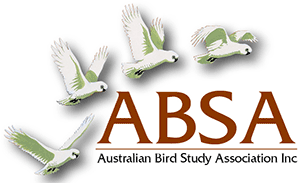Diets of Wedge-tailed Eagles Aquila audax and Little Eagles Hieraaetus morphnoides breeding near Canberra, 2008–2009
| Posted: |
23/03/2021 |
| Author(s): |
A. B. Rose, David Judge, Jerry Olsen, S. J. S. Debus |
In the Australian Capital Territory during 2008–09, the diet of breeding Wedge-tailed Eagles Aquila audax consisted
of 65 per cent mammals, 33 per cent birds and 1 per cent reptiles by number (n = 94 prey items from 10 nests), of which
19 per cent consisted of macropods, 34 per cent rabbits (mostly adults, plus 4% hares), and a range of other large
mammals, many probably eaten as carrion. Breeding Little Eagles Hieraaetus morphnoides took 52 per cent mammals,
45 per cent birds and 3 per cent reptiles by number (n = 58 prey items from six nests), of which 2 per cent consisted of
macropod (one small joey kangaroo) and 50 per cent rabbits (mostly juveniles). Both eagle species took more rabbits
in 2008–2009, compared with two earlier periods in 2002–2003 and 2004–2007. By biomass Wedge-tailed Eagles took
93 per cent mammals (20% rabbits, 45% macropods); Little Eagles took 73 per cent mammals (almost entirely rabbits)
and 24 per cent birds. Geometric Mean Prey Weight for Wedge-tailed Eagle prey was 1650 grams, for Little Eagles 337
grams. Standardised food niche breadth was 0.205 for Wedge-tailed Eagles, and narrower (0.143) for Little Eagles. The
Shannon Index for Wedge-tailed Eagles was 2.75, for Little Eagles 2.28. Although a Pianka Index suggests 46 per cent
overlap in prey used by the two eagles, the great diff erence in GMPW and heavy use of rabbits by Little Eagles suggest
that there is little interspecifi c competition for prey. Little Eagles may be declining in the ACT because rabbits, their main
prey, are poisoned, and this poisoning may aff ect Little Eagles more than some other raptors.
>> Download Abstract |
File Size: 104KB
>> Download Complete PDF | File Size: 105KB
